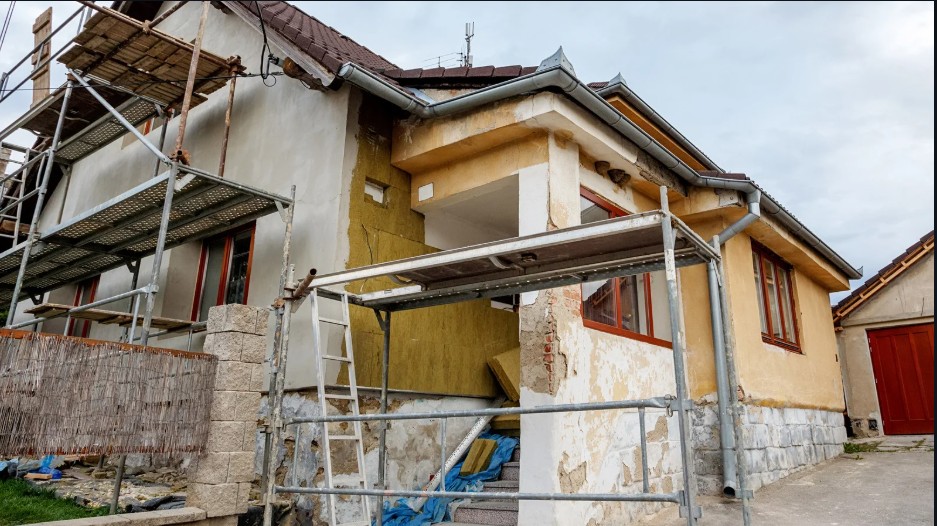Cracks in your driveway, crumbling steps, and sagging sidewalks might seem like minor annoyances. But neglected concrete damage can seriously lower your property’s value—and even create safety hazards. The good news? Many of these issues can be fixed without a full replacement. Some simple concrete repairs can restore your home's curb appeal and integrity fast.
Whether you're getting ready to sell or just want to protect your investment, this guide breaks down the most common concrete problems—and the best ways to fix them. Let’s dig in.
Why Concrete Damage Shouldn’t Be Ignored
Concrete is known for its strength, but it's not invincible. Over time, exposure to moisture, temperature changes, heavy loads, and even tree roots can cause it to crack or deteriorate. Ignoring these problems only allows them to grow.
Here’s what can happen if you don’t act fast:
- Decreased home value from unsightly damage
- Trip hazards and potential liability issues
- Water intrusion into your foundation or basement
- Higher repair costs later on due to worsened damage
Think of concrete repair as an investment, not an expense. A few smart fixes today could save you thousands down the road—and maybe even a deal if you’re selling.
Signs Your Concrete Needs Repair
Not sure if your concrete is in crisis mode? Here are the warning signs to watch for:
- Cracks (especially ones wider than ¼ inch)
- Uneven or sunken slabs
- Pitting, flaking, or scaling on the surface
- Rust-colored stains (often from rebar corrosion)
- Pooling water after rain
- Shifting or loose steps and walkways
If you notice any of these, it’s time to take action.
The Most Common Causes of Concrete Damage
Before jumping into repairs, it helps to understand what’s causing the problem. These are the most common culprits:
- Freeze-thaw cycles: Water seeps into tiny cracks, freezes, expands, and makes cracks worse.
- Soil movement: Expansive or eroding soils can shift slabs.
- Heavy loads: Vehicles or heavy machinery can stress the concrete beyond its limits.
- Improper installation: Poor sub-base prep or bad mixing can cause early failure.
- Tree roots: Roots from nearby trees can push concrete upward or apart.
By knowing the source, you can pick the right repair method—and prevent the damage from coming back.
Crack Repair: Quick Fixes That Last
Small cracks don’t always mean big trouble—especially if you catch them early. Here are a few proven ways to repair cracks in concrete:
1. Concrete Caulking
Perfect for narrow cracks, this flexible sealant helps keep water and debris out. It’s a simple DIY job with a caulking gun and a bit of patience.
2. Epoxy Injections
For structural cracks, epoxy provides a strong bond that restores the strength of the concrete. Professionals typically use this method for basement walls or load-bearing slabs.
3. Polyurethane Foam
This expanding foam fills gaps and voids while remaining flexible. It’s ideal for cracks caused by shifting soils or freeze-thaw cycles.
4. Routing and Sealing
This method involves widening the crack slightly before applying a sealant. It’s especially effective on horizontal surfaces like driveways or garage floors.
Pro tip: Always clean the crack thoroughly before sealing. Dirt or moisture can weaken the bond.
Leveling Uneven Concrete: Say Goodbye to Tripping Hazards
Sunken or uneven concrete isn’t just ugly—it’s dangerous. Instead of replacing the entire slab, consider these faster and more affordable options:
1. Mudjacking (Slabjacking)
This time-tested method involves pumping a slurry of cement, soil, and water under the slab to raise it back into place. It’s perfect for sidewalks, driveways, and patios.
2. Polyjacking
A modern take on mudjacking, this method uses high-density polyurethane foam. It requires smaller holes, sets faster, and is more water-resistant.
Both methods are effective, but polyjacking tends to last longer and cause less disruption.
Surface Resurfacing: When Your Concrete Looks Tired
If your concrete surface is pitted, stained, or just plain ugly, resurfacing might be the fix you need. Here’s how it works:
- The top layer of concrete is cleaned and roughened.
- A thin overlay or resurfacer (usually polymer-modified cement) is applied.
- You can add textures, patterns, or even colors for a fresh new look.
Concrete resurfacing is like giving your patio or porch a facelift—without tearing anything out. It’s faster, cheaper, and eco-friendly compared to full replacement.
Spalling, Flaking, and Scaling: How to Repair Surface Damage
Concrete that flakes or chips is often the result of moisture damage or freeze-thaw cycles. Here’s how to bring it back:
- Clean the surface thoroughly using a pressure washer.
- Use a concrete patching compound to fill in damaged spots.
- Apply a sealer or resurfacer to protect it from further harm.
If the damage is deeper, a resurfacer may not be enough. In those cases, a patch-and-replace approach works best.
Dealing with Stains: Restore Your Concrete’s Clean Look
Oil, rust, mold, and mildew stains don’t just look bad—they can also weaken the concrete if left untreated.
Here’s how to clean them up:
- Oil stains: Use a degreaser or a poultice made from kitty litter and dish soap.
- Rust stains: Try a lemon juice and baking soda paste or a commercial rust remover.
- Mold/mildew: A bleach-water mix (1:10 ratio) can kill and remove growth.
- General grime: Power washing with hot water and a good concrete cleaner works wonders.
Once it’s clean, seal the surface to make future cleanup easier and protect against further staining.
When to Replace vs. Repair
Not all concrete can be saved. Sometimes, the damage is too deep or widespread, and replacement is the smarter choice. Here are some signs that it’s time to tear out and start fresh:
- Cracks wider than ½ inch that run through the slab
- Severe spalling that affects the structural integrity
- Multiple sinking or shifting slabs
- Concrete that's more than 30-40 years old and showing widespread failure
Still not sure? A concrete specialist can assess your situation and recommend the most cost-effective option.
How to Prevent Future Concrete Damage
Once you’ve made your repairs, you’ll want them to last. Here’s how to keep your concrete in great shape:
- Seal regularly (every 2–3 years) to block moisture and stains
- Keep it clean by removing debris, salt, and oil quickly
- Fix small cracks early before they grow
- Control water drainage so it doesn’t erode or freeze around your slabs
- Trim back trees with invasive roots
Maintenance is the secret weapon to protecting your concrete—and your home value.
How Concrete Repairs Boost Your Home’s Value
Let’s talk numbers. Well-maintained concrete can add thousands to your property value. That includes:
- Higher curb appeal
- Fewer red flags during inspections
- Lower risk of liability claims
- Longer lifespan for driveways, patios, and walkways
In competitive real estate markets, even small flaws can turn buyers off. Quick, professional-looking repairs can tip the scales in your favor.
Conclusion: Concrete Repairs That Pay Off
A concrete crisis doesn’t have to be a budget-breaking disaster. With the right repairs, you can restore the strength, beauty, and value of your home—often in just a day or two.
From sealing cracks to leveling slabs, these simple fixes protect your home from long-term damage and boost its appeal. Whether you’re planning to sell soon or stay for decades, give your concrete the care it deserves. A local expert like Concrete Pros Bend can help you make informed decisions and ensure the job is done right. Your wallet—and your feet—will thank you.
Would you like a downloadable checklist of these concrete repairs? Or a version tailored to your local climate or region? Let me know—I can create one for you!






Comments